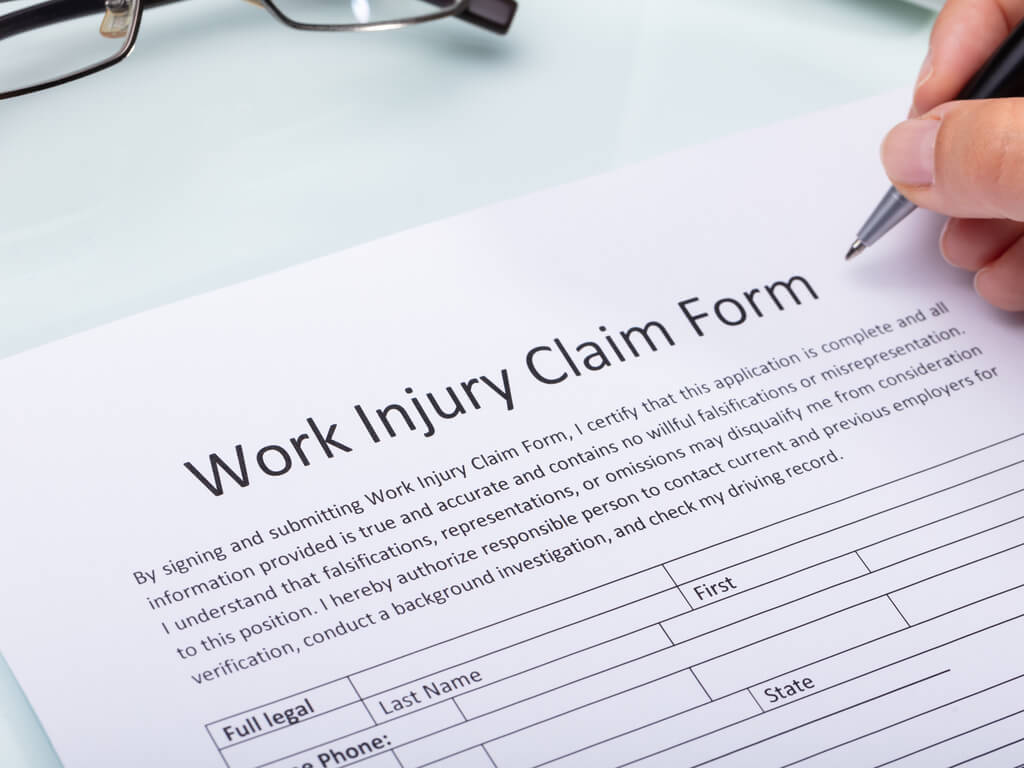What are the Most Common Workers’ Comp Injuries?

Mazzoni Valvano Szewczyk & Karam has represented clients with various workers’ compensation injuries. There are several different ways employees can be hurt on the job. While we have a general list of all the types that we have represented, there are several types of workers’ comp injuries that we see happen more than others.
While it’s never good to be injured at all, sustaining one of these injuries is preferable to others. Because they are so common, it’s harder for an employer to deny you workers’ comp. On the off chance that they still deny you compensation for your injury, your case will be far easier to prove in court.
#1. Sprains
A sprain, as defined by Mayo Clinic, “is a stretching or tearing of ligaments.” The most common location for a sprain is the ankle, but that doesn’t mean it isn’t common to have a sprain in other areas. This is a common workers’ comp injury for any job that involves lifting as it can happen to several different places in your body.
The average sprain can begin to feel better after a few days to a week of recovery. For some people, missing a week’s worth of work isn’t an option, hence the need for workers’ compensation. If they work even though they’ve sprained something like their ankle, their injury will worsen, and their recovery time will increase. It’s better to file a claim for workers’ compensation than to spend months recovering from a severe sprain.
#2. Burns
While a burn technically is an injury caused by heat or fire, chemical burns are also common workers’ comp injuries. There are several kinds of workplaces, such as construction, manufacturing, or cooking, where someone can suffer from a burn.
To make it more complicated, burns come in different degrees with vastly different recovery times. This means there’s no standard recovery time because burn injuries are typically all wildly different. Your employer will likely be experienced in dealing with employees filing a workers’ comp claim for burns. This could mean that they’re more likely to approve it, but should they deny it, a history of fellow employees with burns would help you and your representation build a strong case.
#3. Lacerations
Any deep cut or tear in the skin or flesh is considered a laceration. This means anything from cutting yourself with a box cutter to having a limb eviscerated by a saw can be considered a laceration. Possibly the most gruesome of workers’ comp injuries, you can likely point to the machine or tool that would cause a laceration.
But know that a workers’ comp claim is limited to lacerations from devices you and other employees use. If the environment has anything from a broken railing to exposed nails, a laceration from any of those will count as a workers’ comp injury as well.
#4. Fractures
“A fracture is a broken bone,” as defined by Healthline. This workers’ comp injury is commonly caused by many of the same accidents that cause sprains but is even worse. Because a sprain happens to the muscles in your body, the consequences are far less severe than for a fracture.
There are incomplete and complete fractures, the difference causing a big difference in your workers’ comp payout. An incomplete fracture is more of a crack in your bone, where it doesn’t break completely. This takes a shorter time to heal, and more often than a complete fracture, doesn’t leave permanent damage. A complete fracture where the bone is fully broken takes a long time to heal and leaves lingering damage if it does not heal properly. This can leave you needing a large workers’ comp payout, especially if the injury will affect you for the rest of your life.
There are closed and open fractures, but this distinction is less important than that between a complete and incomplete fracture. Closed vs. open is the difference between whether the break-in bone breaks your skin.
#5. Eye Injuries
Eye injuries can be anything from a laceration of the eye, to being a side effect of your working conditions. It’s not uncommon for a factory, a construction site, or even a restaurant to have fumes that get into a worker’s eyes, burning them or worse. This injury, while one of the most common, is one of the hardest to prove should your workers’ comp claim be denied. Your legal representative would have to prove that your eyes could not have sustained damage or blindness due to genetics or home activities, but Mazzoni Valvano Szewczyk & Karam has the experience in doing just that.
Don’t Suffer in Silence, Get Paid for Your Workers’ Comp Injury
Too many are afraid to speak up about their injury. If you suffered an injury at work, workers’ comp is supposed to take care of you. If it’s a common occurrence in your workplace, that doesn’t mean you should accept it and move on. That means you have a history of examples as to why this injury was the fault of your workplace.
Mazzoni Valvano Szewczyk & Karam has an experienced team of workers’ comp injury lawyers who can represent you. We won’t let you suffer from any damages any longer; all you have to do is contact us for representation.

